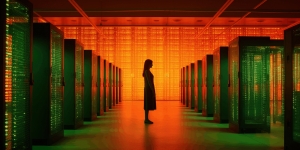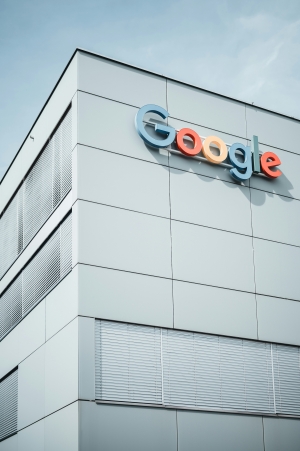Test Owner
A £750 million hyperscale data centre has been approved for construction in East London, marking a major development in the UK’s digital infrastructure. This massive project will cater to the growing demand for data storage and cloud services, driven by advancements in AI, big data, and cloud computing.
Strategically located in East London, the project will create jobs and boost the local economy, further establishing the area as a tech hub. The centre will also prioritize sustainability, incorporating energy-efficient technologies to address the high energy demands of data centres.
This hyperscale facility will play a vital role in supporting industries reliant on big data and is a key part of the UK's future as a digital leader.
In October 2024, administrators from EY overseeing the collapsed construction firm ISG announced to subcontractors and suppliers that there are no funds to settle outstanding debts. ISG’s failure has halted numerous ongoing projects, and creditors are being advised to file claims, though the possibility of recovery is slim. The administrator confirmed that further updates would come within eight weeks of the company's administration, but uncertainty looms over the fate of unpaid subcontractors. This highlights the precarious position of subcontractors when major firms face insolvency, and the risks inherent in relying on large contractors.
Additionally, the article underscores a broader trend in the UK construction sector, where cash flow issues and project mismanagement can lead to a domino effect, impacting smaller players. Subcontractors, often the backbone of large projects, are particularly vulnerable when major contractors like ISG collapse, as they are usually at the bottom of the payment chain.
This situation may also prompt questions about risk management, payment protections, and the role of legislation such as the Construction Act. Subcontractors may need to rethink their approaches to securing timely payments in large-scale construction projects, possibly pushing for more robust contractual safeguards to avoid such financial setbacks in the future.
We have taken this opportunity to run a poll on our LinkedIn page to explore how subcontractors should protect themselves when major contractors face financial collapse.
Poll Options:
- Stronger payment guarantees
- Legislation changes
- Diversify clients, reduce risk
- Shortening payment terms
Here is the link to share your thoughts:
https://www.linkedin.com/feed/update/urn:li:activity:7249758858871455745
£10 Billion Boost for Northumberland: Blackstone’s Investment in Europe’s Largest AI Data Centre
In a significant boost to the UK's tech sector, Blackstone, one of the largest private equity firms, is investing £10 billion into creating Europe’s largest AI-focused data centre in Blyth, Northumberland. This move is expected to generate up to 4,000 jobs and solidify the UK as a key destination for global tech investments. Keir Starmer, the Labour leader, has praised the deal as a symbol of the UK being "open for business," welcoming foreign investments that aim to drive growth and innovation.
This investment highlights the increasing demand for infrastructure supporting AI, data processing, and cloud technologies. The centre will be a cornerstone for Europe’s digital economy, offering cutting-edge facilities designed to support high-tech industries like artificial intelligence, machine learning, and advanced computing. The UK's competitive edge in tech, however, also brings challenges, particularly in ensuring the availability of skilled labour to support this rapid growth.
As more international investments focus on the UK's digital infrastructure, the demand for qualified engineers, particularly in data centre management and operations, continues to rise. This could lead to a skill shortage in certain areas, presenting both a challenge and an opportunity for local talent development.
If you're a data centre engineer in the area, we’re open to speaking with experienced professionals who can support the growing demands of the industry. Let’s build the future of technology together!
The recent collapse of ISG, one of the UK's largest construction firms, has had immediate and wide-ranging effects, not only within the construction sector but also on specialised markets such as data cabling. The company, which filed for administration in September 2024, was a major player in large-scale construction projects, including data centres, many of which rely heavily on structured cabling systems.
Impacts on the Data Cabling Market:
- Disruption of Data Centre Projects: ISG had been involved in several high-profile data centre builds in the UK, including projects in Slough and Hayes. With the company ceasing operations, ongoing projects have been abruptly halted. Contractors, including data cabling specialists, are now left unpaid, creating uncertainty for completion timelines. For the data cabling sector, this disrupts supply chains, as subcontractors and suppliers working on these projects may face significant financial strain due to ISG’s unpaid debts.
- Ripple Effect on Subcontractors: ISG's administration is expected to send a financial "tsunami" through its supply chain, with many subcontractors, including those in the cabling industry, facing considerable losses. This could lead to further insolvencies or forced renegotiations of contracts, as affected firms attempt to recover from ISG’s collapse. The complexity of these projects, particularly data centres which require extensive cabling infrastructure, means subcontractors could see delays in payments, or even non-payment for completed work.
- Increased Competition for Contracts: As ISG exits the market, there will likely be a scramble among surviving contractors to take over its unfinished projects, particularly in lucrative sectors like data centre construction. Cabling contractors who had relied on ISG may now seek new partnerships, potentially driving up competition for fewer available projects. This shake-up could also lead to smaller or more specialised firms entering the space as larger companies like ISG vacate.
- Pressure on Pricing and Deadlines: With ISG gone, companies picking up the slack may face pressure to complete projects quickly, especially data centres, which are critical for industries like cloud computing. This urgency could force cabling companies to work under tighter deadlines and possibly at reduced margins as they adjust to new contractors and project owners.
Overall, the collapse of ISG highlights the fragility of the construction ecosystem and its interconnected nature, with the effects rippling down to niche sectors like data cabling. As the market absorbs the shock of ISG’s exit, companies involved in these projects will face significant challenges, including financial recovery, finding new partners, and navigating the competitive landscape left in ISG’s wake.
In an exciting development for London’s tech landscape, McLaren is on the verge of signing a significant contract to construct one of the largest data centres in the city.
McLaren Triumphs Over Sisk for Major Contract
Industry insiders reveal that McLaren has successfully outbid Sisk to secure the prestigious deal with Ada Infrastructure, located in Silvertown, London. Ada Infrastructure, the data centre arm of GLP Capital Partners, recently received planning approval from the Newham Strategic Development Committee.
A Cutting-Edge Facility for AI Workloads
The upcoming 210 MW Docklands data centre campus is tailored to support emerging AI workloads and will span across three buildings. McLaren's contract for the first building is reportedly valued at over £500 million.
A Booming Market
An industry source commented, “The data centre market is absolutely flying at the moment, and this is a prize job. It’s a real statement of intent from McLaren to pick up a contract like this.”
Commitment to Sustainable Development
Jennifer Weitzel, President of Ada Infrastructure, emphasised the project’s dedication to sustainability and community engagement: “This new data centre development embodies our commitment to driving positive change through the use of sustainable technology and materials, a robust environmental, health and safety program, and an ongoing investment in the communities in which we work and live. In addition to collaborating with local partners to provide job training and employment opportunities, the project’s future-ready design, including energy-efficient systems, net positive landscaping, and strict physical and cybersecurity protocols, will set new standards for safe and sustainable development in the age of AI.”
Enhancing Public Spaces
The development will also significantly improve the surrounding public spaces, with enhanced pathways for pedestrians and cyclists along the Thames River.
Stay tuned for more updates on this groundbreaking project, which promises to redefine London's data infrastructure landscape.
In the era of rapid technological advancement and exponential data growth, the expansion of the data centre industry is undeniable. London, in particular, shines as a beacon for Europe's data centre market, boasting significant growth potential. However, as the demand for data centres continues to surge, questions arise: Can the UK construction sector keep pace with this expansion? And what challenges does this growth pose?
London's Data Centre Dominance
According to Turner & Townsend’s Data Centre Cost Index 2023, London emerges as Europe's primary hub for data centre expansion, with an estimated operational capacity of 1GW by the end of 2023. This places the city in the global top three, trailing only Beijing and North Virginia's established tech clusters. Despite this impressive position, several hurdles loom on the horizon.
Challenges on the Horizon
While London holds promise, challenges such as power grid capacity, land availability, and shortages of skilled labour specialties threaten to impede its growth trajectory. Additionally, sustainability concerns regarding carbon emissions and energy consumption cast a shadow over the industry's future.
Sustainable Solutions
Addressing sustainability concerns requires innovative solutions. High-efficiency cooling systems and advancements in water circulation techniques show promise in reducing electricity demand. Furthermore, the transition to hyperscale data centres, coupled with the adoption of cleaner energy sources, offers a pathway toward a more sustainable future.
Navigating Supply Chain Constraints
Beyond sustainability challenges, supply chain constraints pose significant obstacles. Shortages of skilled contractors, compounded by economic disruptions, lead to increased labour costs and longer lead times for equipment and materials. Despite these challenges, the demand for data centre services remains robust, fuelled by emerging digital technologies like blockchain and machine learning.
Looking to the Future
Despite the hurdles, the outlook for the data centre sector remains optimistic. Major projects across the UK, including the Google Data Centre in Hertfordshire and the Segro Park Iver project in Buckinghamshire, signal continued growth in the industry. To navigate this complex landscape, clients should explore alternative procurement models and adopt proactive planning strategies.
Conclusion
As the data centre industry continues to expand, the UK construction sector faces both opportunities and challenges. Sustainability concerns, supply chain constraints, and the need for skilled labour present significant hurdles. However, with proactive planning, innovative solutions, and strategic procurement approaches, the industry can overcome these obstacles and thrive in the digital age.
In a significant move to fortify its technological infrastructure in the United Kingdom, Google has announced a $1 billion investment in a new data centre located in Waltham Cross, Hertfordshire. This strategic investment reaffirms Google's commitment to supporting the digital economy, fostering innovation, and advancing AI-powered technologies that contribute to the growth and well-being of communities across the UK and beyond.
Empowering the Digital Landscape:
The 33-acre site is poised to not only create construction and technical jobs for the local community but also to provide essential compute capacity to businesses nationwide. As individuals increasingly harness the opportunities presented by the digital economy, Google aims to ensure the availability of reliable digital services to its customers and users in the UK and abroad.
Sustainable Computing for a Greener Future:
Google, a pioneer in computing infrastructure, has set an ambitious goal to run all its data centres and campuses on carbon-free energy (CFE) by 2030. To support this commitment, Google announced a power purchase agreement with ENGIE in 2022, securing offshore wind energy from the Moray West wind farm in Scotland. This move is projected to place Google's UK operations on track to operate at or near 90% carbon-free energy by 2025.
Moreover, the new Waltham Cross data centre is designed to implement off-site heat recovery, a groundbreaking approach that allows the captured heat generated by the data centre to be utilised by nearby homes and businesses. This initiative not only contributes to energy conservation but also benefits the local community, aligning with Google's dedication to sustainability.
Endorsed by Industry Leaders:
Google's unwavering commitment to sustainability has garnered recognition from industry leaders like Rightmove, a British-born company that has migrated its services to Google Cloud. Rightmove sees Google's commitment to decarbonise and build sustainable data centres as instrumental in reducing the carbon impact of their digital infrastructure and supporting their journey towards achieving net-zero goals.
Continued Investment in the UK:
This latest investment in the Waltham Cross data centre is part of Google's ongoing dedication to the UK. Over the years, Google has invested significantly in its UK offices, including the $1 billion purchase of the Central Saint Giles office in 2022, the development in King's Cross, and the launch of the Accessibility Discovery Centre, aimed at fostering accessible technology for the entire UK.
Beyond office investments, Google has laid the Grace Hopper subsea cable in 2021, connecting the UK with the United States and Spain. Moreover, the company has demonstrated its commitment to community development by visiting over 500 locations across the UK since 2015 and providing over 1 million people with free digital skills training.
In 2023, Google expanded its Google Digital Garage training programme to include a new AI-focused curriculum, enabling more Brits to tap into the opportunities created by AI technology. These initiatives collectively underscore Google's role as a key player in the UK's technological landscape, contributing to the nation's leadership in AI, technology, and science.
Google's $1 billion investment in the Waltham Cross data centre signifies more than just a financial commitment; it reflects a vision for a sustainable, innovative, and interconnected future, where technology serves as a catalyst for positive change. As the digital landscape continues to evolve, Google's investments in the UK position the company as a pivotal force in shaping the technological narrative for years to come.
In the digital age, data centres have become the beating heart of the information technology world, fueling the digital ecosystem and powering our modern lives. As we've delved into the interplay between data centres, energy consumption, and information and communication technology (ICT), it's evident that the United Kingdom is a formidable player in all three arenas. In our previous discussions, we've examined how IT investments are increasingly shifting toward renewable energy sources and how data centres wield a profound impact on our interconnected world. Today, our focus narrows to the largest data centres in the UK and the staggering amounts of energy they require to serve their clients.
Data centres are the backbone of Big Tech, pivotal for business continuity, and offer enhanced performance and security for hosted data. However, each data centre has its limits, influenced by factors such as location, type, ownership, and the kind of information it stores. The United Kingdom is no exception to this rule, and as we explore the five largest data centres based on consumption, surface area, and the number of servers they house, we'll uncover the colossal energy demands that drive these technological powerhouses.
#1 Next Generation Data Centre
The Next Generation Data Centre, situated in Wales, UK, stands as a monument to technological supremacy. Completed in 1998, it's arguably the largest data centre in all of Europe. Within its vast confines, it accommodates a staggering 19,000 servers, encompassing an expansive surface area of 750,000 square feet. To satisfy its insatiable energy appetite, the data centre boasts a customer power rating of 250 megawatts.
Remarkably, this facility was originally designed to serve the needs of the LG semiconductor plant. Today, its main clientele includes Logica and BT, each of which leverages the data centre’s infrastructure for crucial IT services. Logica, in particular, provides essential IT services to the British government, while BT relies on the centre for various IT-related activities to enhance performance and responsiveness.
One standout feature of the Next Generation Data Centre is its unparalleled power reliability, thanks to a private distribution network of 9 MVA (mega-volt-amperes) directly supplying the data centre site. This unique attribute has enticed customers ranging from mid-level enterprises to large corporations, reinforcing its status as a technological behemoth.
#2 KAO Data Campus
Harlow, Essex, is home to the KAO Data Campus, an impressive facility spanning a colossal 150,000 square meters. This data centre is embedded within a sprawling complex equipped with advanced IT infrastructure capable of supporting and facilitating future expansions for numerous organisations.
With an estimated customer power demand of 100 megawatts, the KAO Data Campus has garnered significant investments, totalling £33 million, with ambitious plans to reach £200 million by 2025. Comprising 16 halls and boasting 500 server rack locations per suite, this centre stands out as one of the few in the UK holding a UTI Tier 3 design certification.
#3 GTP 3 Data Centre
Birmingham hosts the GTP 3 Data Centre, a facility offering a scalable surface area ranging from 10,000 to 40,000 square meters. Built on a five-acre plot, it plays a pivotal role in serving public, government, and enterprise services across the UK.
In addition to supporting these essential functions, the GTP 3 Data Centre extends its services to cloud B2B activities and maintains a round-the-clock maintenance support team to ensure seamless operations. Its estimated customer power demand ranges from 15 to 16 megawatts.
#4 Telehouse North
Originally designed as a disaster recovery site for Japanese banks, the Telehouse North Data Centre has evolved into a seven-story building, offering nearly 100,000 square feet of technical capabilities. This space is divided across five of the seven floors within the facility.
Although colocation rack space is available in clusters, securing dedicated caged space may only be possible when existing clients free up capacity. Cross-connects are now more accessible than before, and copper/Cat5 connections are often feasible between rooms when fibre is not necessary.
Telehouse North has experienced periods of high occupancy, occasionally being completely sold out. Despite its age, the estimated total customer power for this facility stands at an impressive 16 megawatts, securing its position as one of the top data centres in the UK.
#5 Virtus Data Centre
Virtus Data Centre, headquartered in London, represents the epitome of a UK-centric data centre, providing mission-critical facilities with its operational base strategically located in and around London's metro area.
Virtus's London2 data centre is not only a flagship for the UK but also caters to the ever-growing customer base with on-demand colocation services. It currently boasts a capacity of 160 megawatts of data centre space.
What sets Virtus apart is its innovative fresh-air, evaporative cooling technology, which significantly reduces energy consumption and enhances site power usage efficiency (PUE), bringing substantial total cost of ownership (TCO) reductions to its customers.
Data Centre Customer Power and Surface in the UK
In the grand scheme of things, data centres are among the most voracious energy consumers, crucial for the continued digital expansion of our world. These technological giants are the lifelines of modern society, and their energy consumption impacts the state of our planet. The only viable path forward, at present, is to transition toward renewable energy sources, balancing our digital growth with environmental sustainability.
How Many Data Centres are in the UK?
As of June 2022, the United Kingdom hosts a total of 461 data centres. Of these, 70 are concentrated in London, with more than 350 scattered throughout the country. This places the UK in the third position globally in terms of the number of data centres, trailing only the United States and Germany. For a comprehensive list of data centres in the UK, you can refer to https://www.datacentermap.com/united-kingdom/
Additionally, there are 1,480 known data centre service providers in the UK, along with 27 network fabrics. This substantial presence underlines the UK's pivotal role in the ever-expanding world of data centres.
Top 5 Countries with the most Data Centres
Data centres play a pivotal role in the modern world, serving as the backbone for various digital operations. The growth of data centres is closely intertwined with factors such as digital transformation, cloud adoption, and the rise of hybrid working models. In this article, we delve into the global landscape of data centres, with a particular focus on how this industry's dynamics could impact the UK market.
- Canada: With 335 data centres spread across the nation, Canada offers a robust data centre landscape. Toronto and Montreal, in particular, have emerged as data centre hotspots. This could serve as an attractive proposition for UK companies looking to establish a North American presence or enhance their global data infrastructure.
- China: China's 448 data centres, primarily located in cities like Shanghai, Shenzhen, and Hong Kong, underline its colossal presence in the digital realm. This expansive infrastructure could be of interest to UK companies seeking to tap into the vast Chinese market, although navigating regulatory complexities is essential.
- UK: With 517 data centres, including 70 in London, the UK possesses a significant domestic data infrastructure. The country's data centre sector is poised for growth, which may lead to increased competition among providers, potentially resulting in improved services and cost-efficiency for UK businesses.
- Germany: Germany's 522 data centres, including numerous centres in Falkenstein, reflect its prominence in Europe's data centre landscape. UK companies targeting the European market may consider forming partnerships or collaborations with German data centre providers to bolster their regional presence.
- U.S.: The United States reigns supreme with a staggering 5,375 data centres, distributed across the nation. While UK businesses often look to the U.S. for expansion opportunities, they should also assess the potential benefits of utilizing American data centre infrastructure to optimize their operations and enhance global reach.
Being ranked third in the world in terms of the number of data centres is undoubtedly a positive sign for the UK market, with several implications for job opportunities and business growth. However, it also necessitates consideration of how companies are exploring other international options in this competitive landscape.
In conclusion, the global proliferation of data centres presents multifaceted implications for the UK market. As data-driven technologies continue to shape industries worldwide, UK businesses must stay agile and strategically evaluate opportunities and partnerships in both domestic and international data centre landscapes.
Introduction: In the rapidly evolving world of real estate, the shift from traditional structures to smart buildings is reshaping the domain of facilities management. With a projected increase of over 150% in the number of smart buildings worldwide, from 45 million to 115 million in just five years, the impact of this transition is set to be significant. But are smart buildings a boon or a bane for facilities management?
What are Smart Buildings? Smart buildings are structures that integrate various building systems, such as HVAC, lighting, alarms, and security, into a single IT-managed network. By utilising technologies like Power over Ethernet (PoE) or Internet of Things (IoT), these buildings collect actionable data from sensors, devices, and services, enabling them to be programmable and responsive to user and manager needs.
Benefits for Facilities Managers: Smart buildings offer a transition from a reactive to a proactive approach in facilities management. By providing a comprehensive view of real-time operations, facilities managers can make informed decisions and focus on future planning. Occupancy sensors can identify high usage areas, allowing for preventive maintenance and avoiding breakdowns. Current sensors can detect potential issues within machinery, enabling early intervention. Additionally, predictive analytics optimize resource consumption, reducing waste and saving costs.
Significant Help with Standards Compliance: Smart sensors in buildings facilitate continuous monitoring, streamlining compliance with industry standards and sustainability regulations. With the goal of achieving net-zero carbon emissions by 2050, smart buildings employ environmental monitoring and occupancy sensors to optimize factors such as lighting, energy use, ventilation, and temperature. By automatically adjusting these systems based on real-time demand, smart buildings reduce energy consumption and contribute to sustainability.
Enhanced Employee and Visitor Experience: Smart buildings prioritize the occupants' experience by monitoring air quality, lighting, and temperature. Personalization of spaces and automated systems for reservations create a comfortable and user-friendly environment. Additionally, automated alerts streamline post-meeting preparations, freeing up facilities managers' time for other tasks.
Improved Environmental Impact & Sustainability: Through data collection and analysis, smart buildings significantly improve energy efficiency. Real-time data on energy usage enables automatic adjustments of lighting and HVAC systems, reducing energy consumption when areas are unoccupied. Predictive maintenance identifies inefficiencies, leading to energy savings. According to studies, smart building technologies can reduce energy use by 18% and lower energy costs by 8-15%, making a substantial contribution to carbon emission reduction.
Challenges: Security Concerns: One significant concern for facilities and property managers is the security of smart buildings. The interoperability of devices in a smart building is vulnerable to cyber threats. To mitigate these risks, it is crucial to prioritize cybersecurity across the entire supply chain. Risk assessments and a secure smart control platform play a vital role in safeguarding data and privacy.
The Future of Facilities Management: The rise of smart buildings marks a transformative era for facilities management. Streamlining operations, enhancing occupants' experiences, and championing sustainability, smart buildings empower facilities managers to predict and mitigate issues, optimise resources, and reduce costs. However, cybersecurity remains a challenge that must be addressed to fully embrace the potential of smart buildings.
In conclusion, smart buildings offer numerous advantages for facilities management. Their proactive approach, combined with advanced technologies and analytics, revolutionises the field by optimising maintenance, enhancing occupant experiences, ensuring standards compliance, and promoting sustainability. By effectively addressing security concerns, smart buildings have the potential to create efficient, sustainable, and user-friendly environments, heralding a new era in facilities management.












